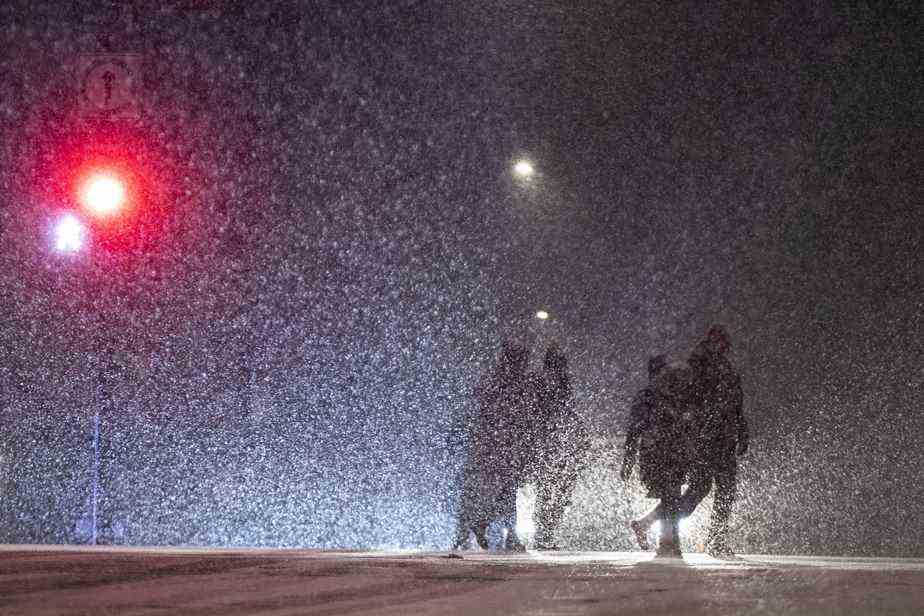(Fredericton) There is a complex and unexpected relationship between rising global temperatures and the likelihood of Canada being hit by more intense snowstorms.
Winters are getting warmer and milder than before, but there’s also been an increase in extreme weather events across the country, such as snowstorms, says John Clague, professor of geoscience at Simon Fraser University in British Columbia.
People might think it illogical to talk about global warming and increased snowstorms. “What scientists are seeing is that climate change is causing more extreme events,” says Professor Clague.
“This means that we can have very high temperatures during the summer, as we have seen in India or Pakistan for recent years. And in winter, one can experience extremely cold conditions. »
One of the factors of these extreme weathers is the jet-current. Environment Canada defines it as follows: “The jet stream is a narrow band of strong winds about 10 km above the Earth, which marks the line of separation between the masses of warm air and cold air” .
The Pr Clague explains that the jet-current moves from west to east. It carries weather systems that move slower than normal. These appear to remain stationary over a region for a period. The mass of cold air or warm air that it carries remains in the atmosphere where it encounters layers of humidity, which causes heavy snowstorms or rainstorms.
“This interaction between low-altitude temperate moist air and colder, drier Arctic air causes snowfall,” he says.
Kent Moore, a professor of atmospheric physics at the University of Toronto, says the fact that climate change is causing more powerful snowstorms may seem like a paradox. There is evidence that global warming is altering the dynamics of jet-stream operation.
The jet stream can have large ripples as the climate warms. This means that it no longer necessarily moves from west to east, but also from north to south and vice versa, like a wave. It brings in Arctic air as it moves south, adds Prof Moore.
“There is some evidence that the jet stream adopts a more undulating pattern as the climate warms. »
The interaction between the decrease in sea ice and the rapid warming of the Arctic decreases the temperature gradient from the south to the north of the country, underlines Professor Moore. A more undulating, or weakened, current carries arctic air southward, creating intense snowstorms.
The oceans also play a role, as warming causes more evaporation. “That means there are more water vapors in the atmosphere, so there are more snowstorms,” he says.
Blair Feltmate, chair of the Intact Center on Climate Adaptation at the University of Waterloo, says warmer air masses hold more moisture. Their thermal energy is greater than that of cold air masses. “It causes significant precipitation in the form of rain in the summer and snow accumulation in the winter. »
Global average temperatures have risen by 1.1°C to 1.2°C over the past 100 years, Feltmate argues. They have increased even more in Canada. Southern Canada is warming at twice the global average. The north is warming at a rate three times higher than the global average.
“This is causing atypical weather in different parts of the country. We could have more snowfall, but also more extreme cold spells. »
Feltmate says the heaviest precipitation intensities in a single year have increased over the past six decades by about 37% at the western end of the Great Lakes and by about 72% at the western end of the Great Lakes. east end.
According to Mr. Feltmate, the storms can be attributed to climate change.
“It’s a bit like a baseball player playing on steroids. All of a sudden this guy starts hitting five times as many home runs, he says. Of course, not all of these circuits are attributable to the steroids, but if he increases his productivity that much, a causal relationship can be established. Climate change is the steroids of the weather. And these steroids are here to stay. »
